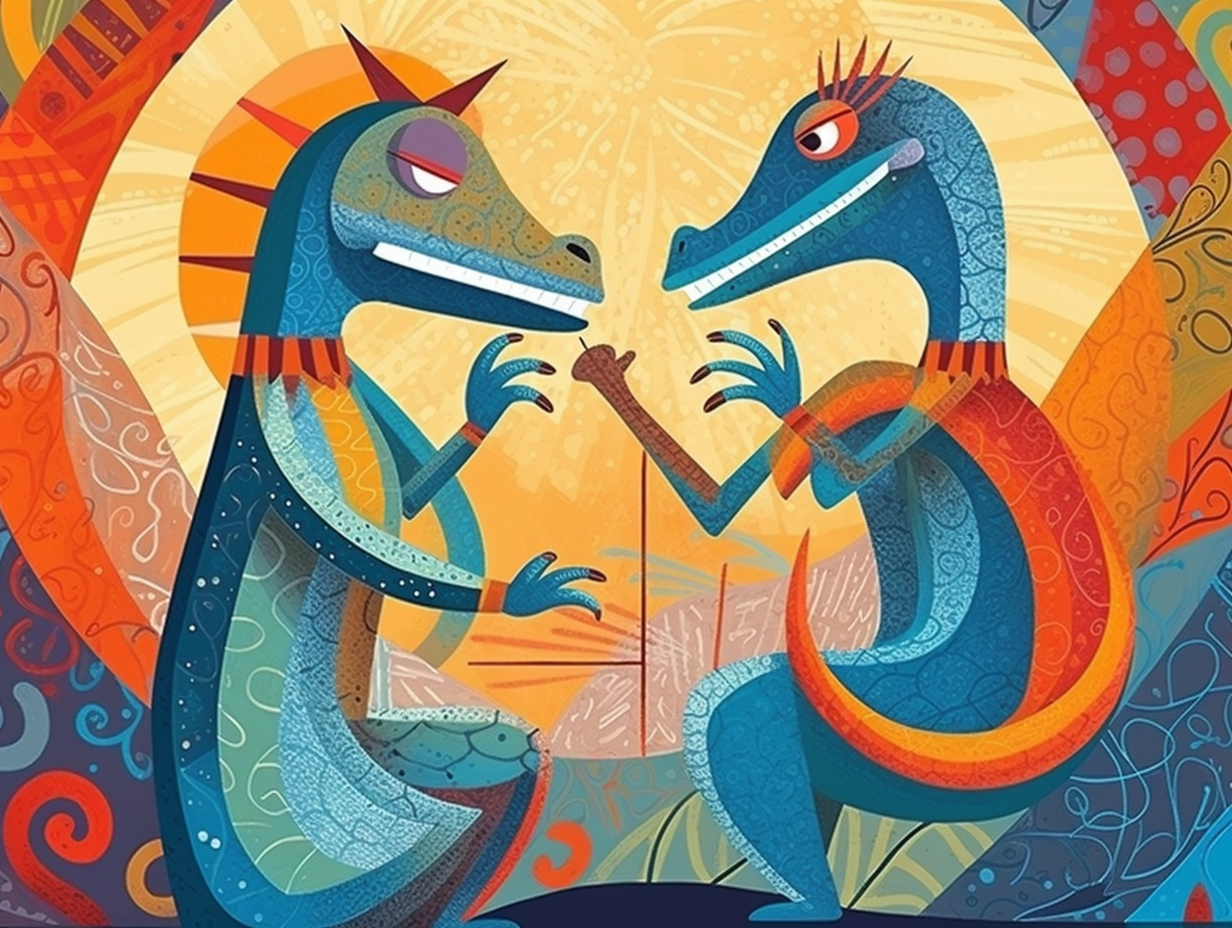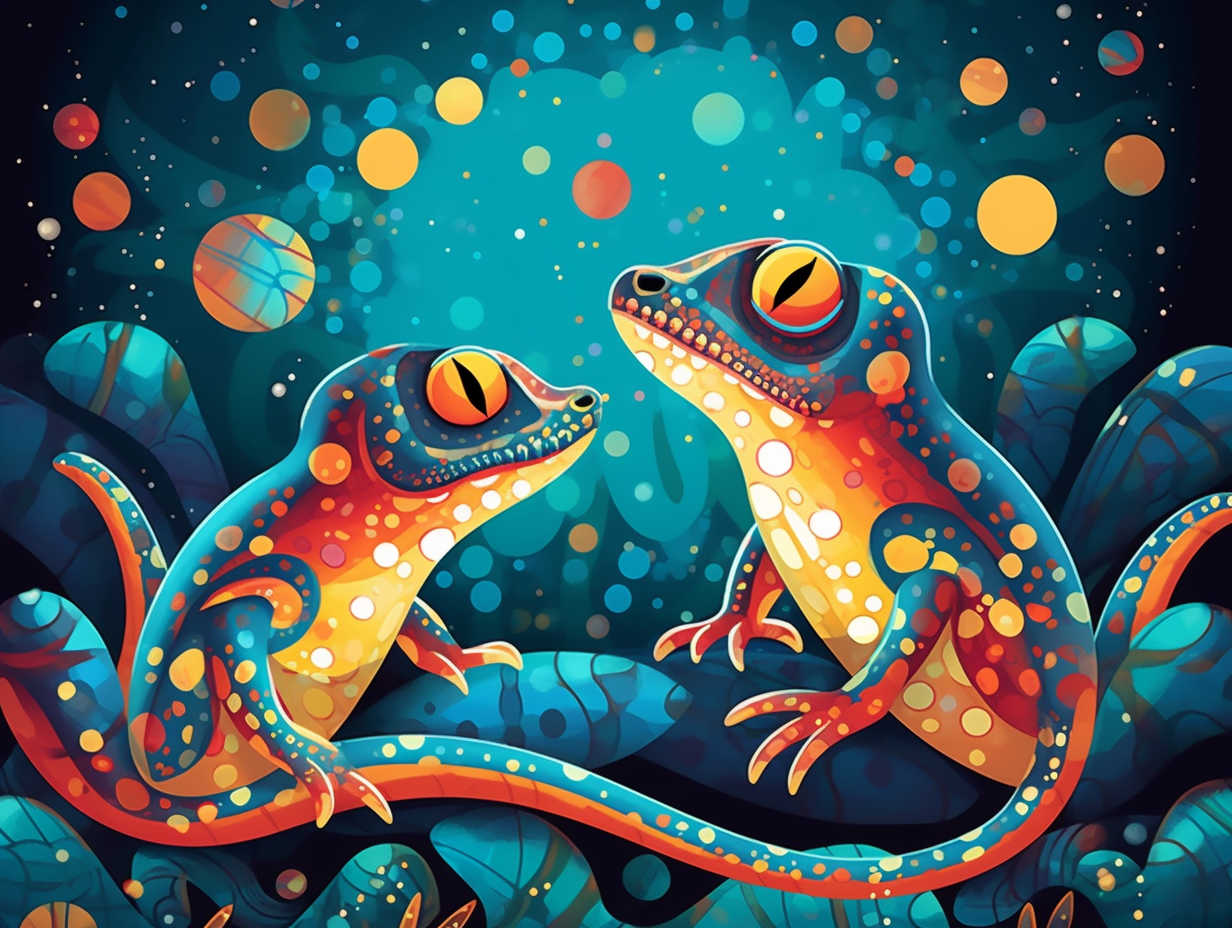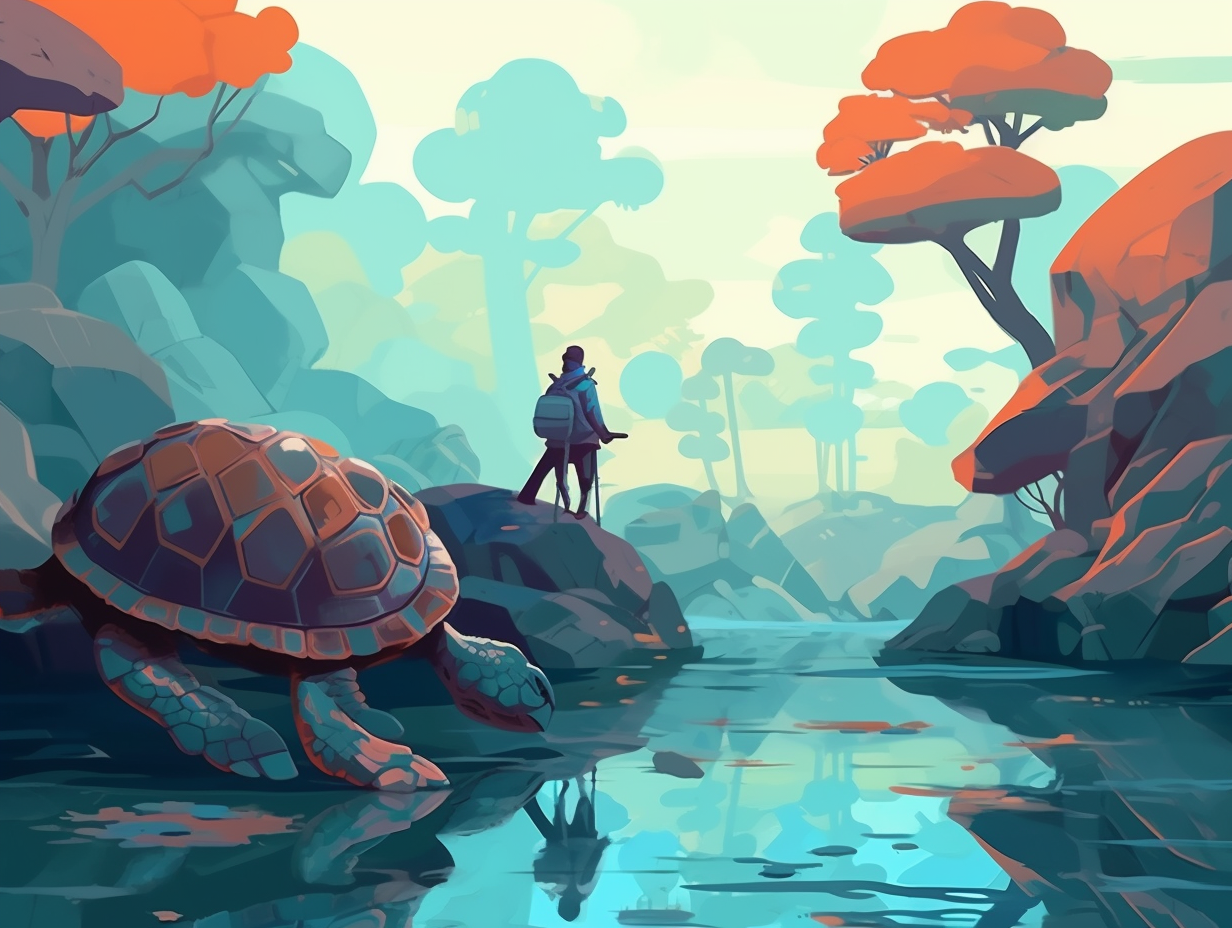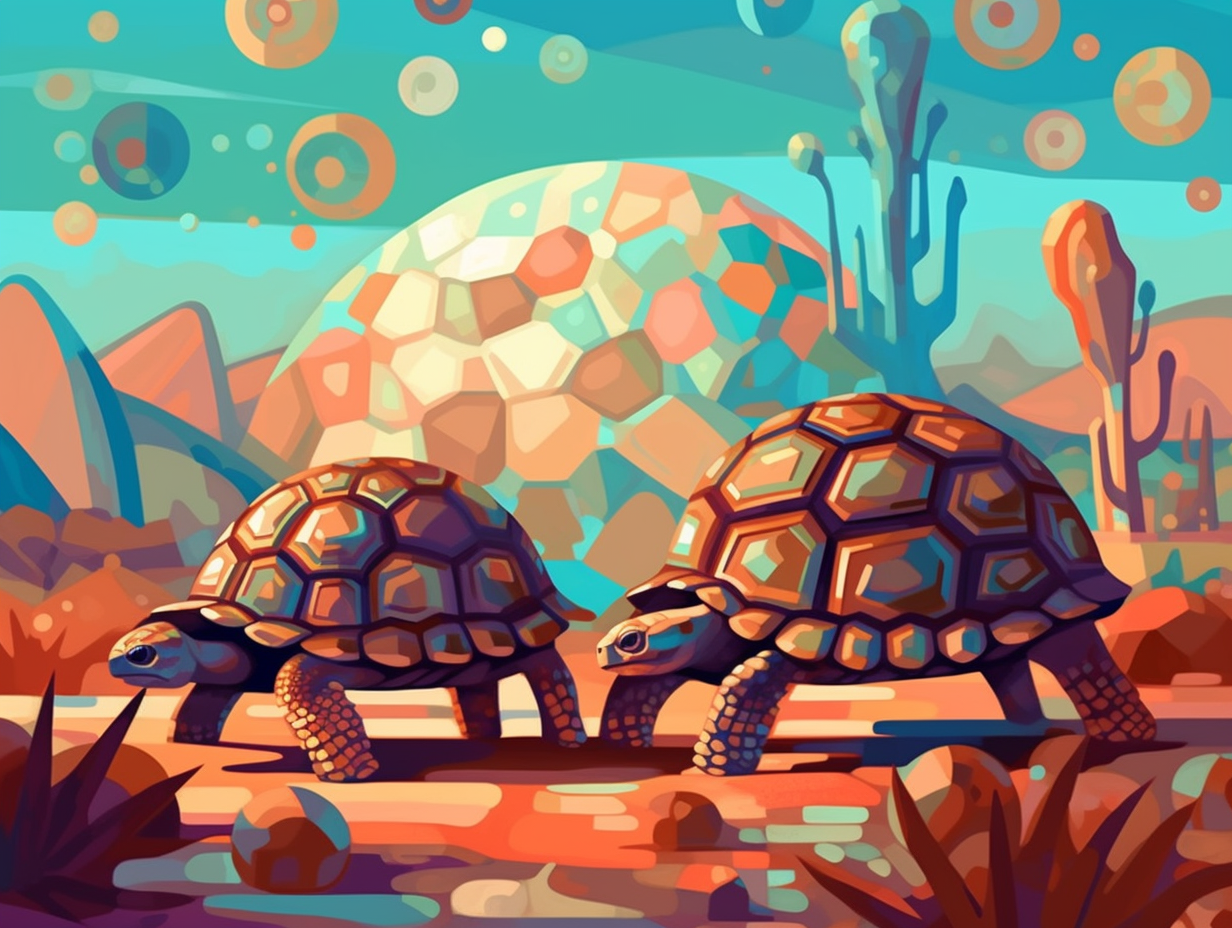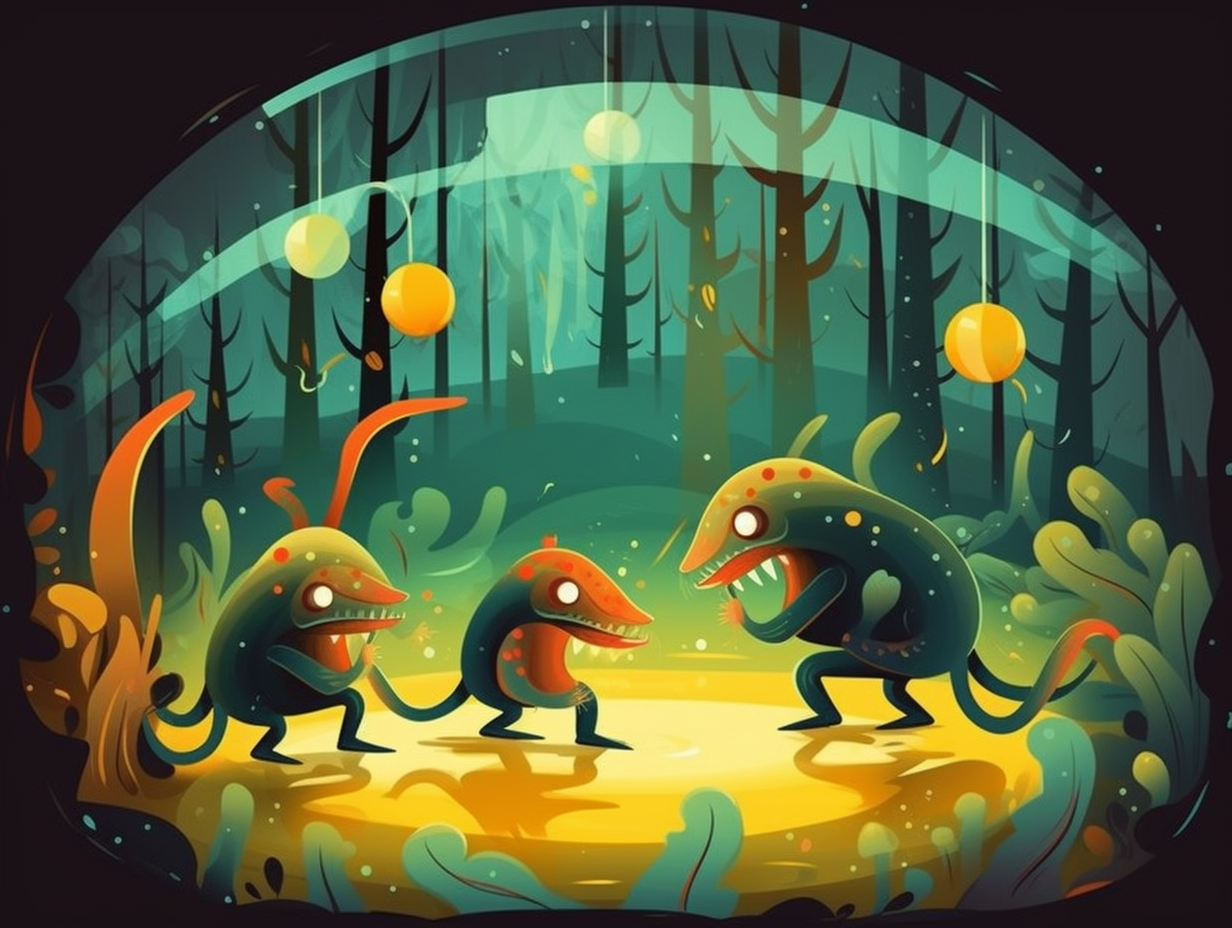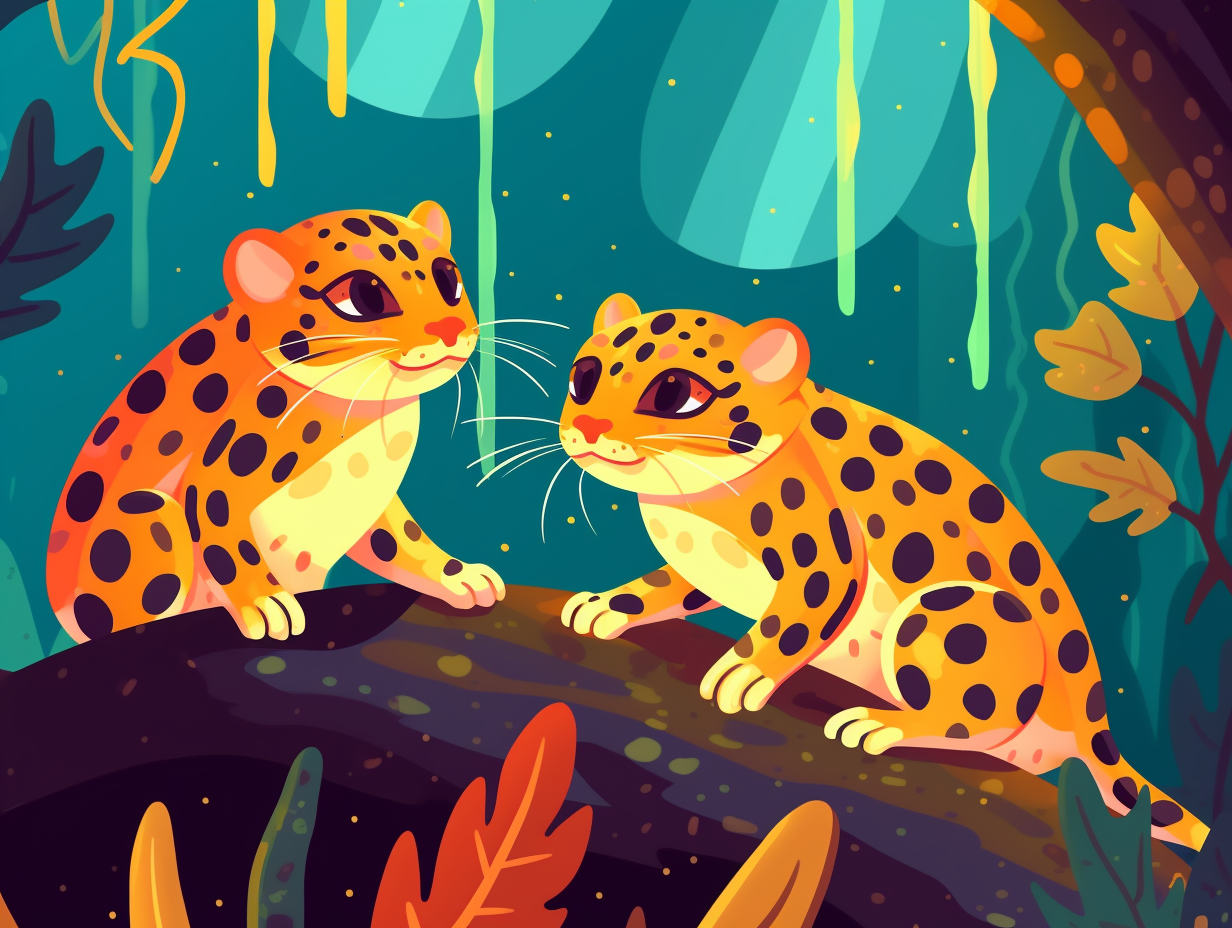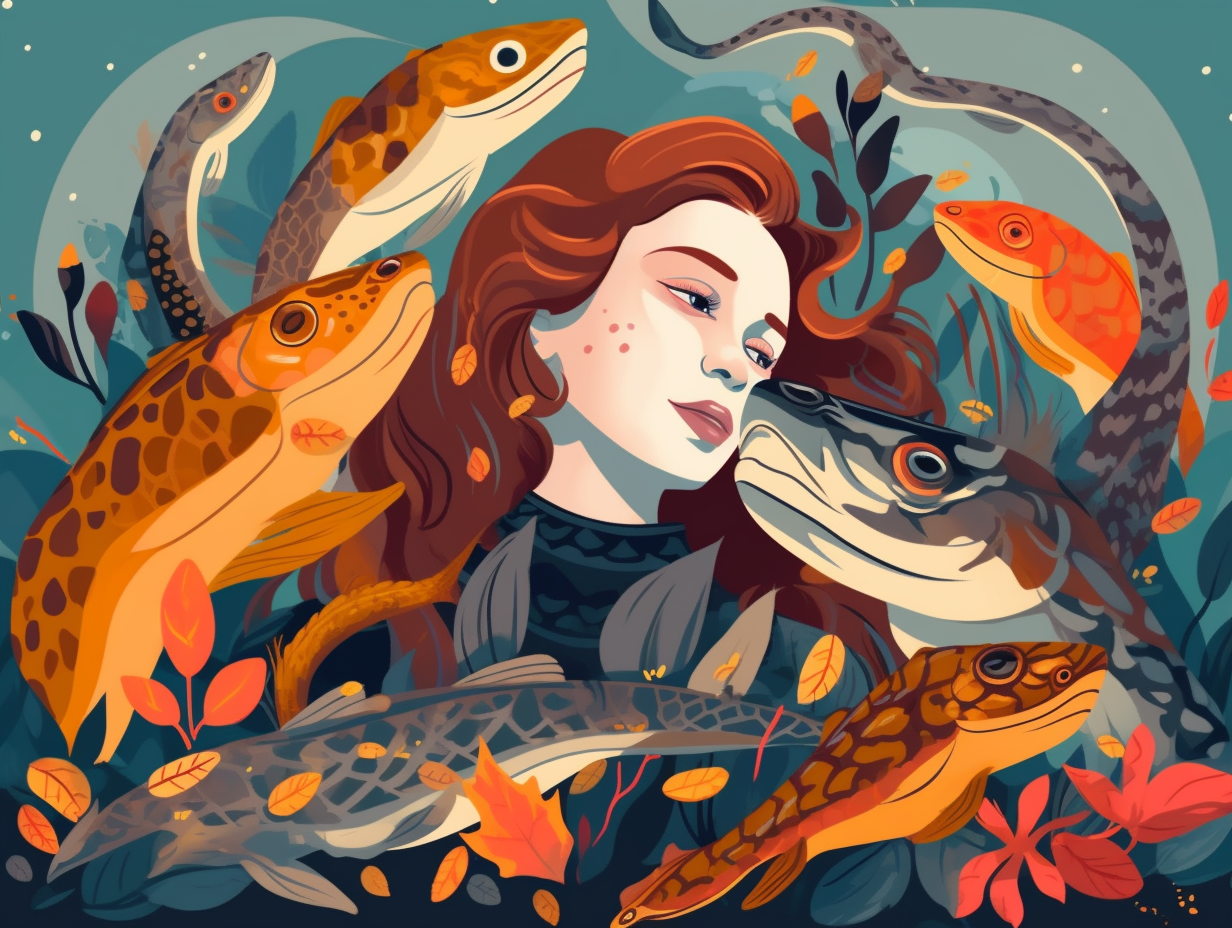Discover the Wild: Top 14 Fascinating and Fun Facts About Komodo Dragons

1. Largest Lizard Lounge
Move over Godzilla, there's a new lizard in town: The largest recorded Komodo dragon tipped the scales at a colossal 366 pounds and stretched to an astounding 10.3 feet in length! These Jurassic Park wannabes can be found lounging around on four Indonesian Islands, boasting the title of the world's most enormous venomous animals. Fear not, though - these awe-inspiring behemoths don't breathe fire or reach a monstrous 23 feet as some wide-eyed seafarers might suggest, but they sure know how to make an entrance!
Source => a-z-animals.com
2. Sherlock Holmes of Reptiles
These clever reptiles are the Sherlock Holmes of the lizard world, using their tongue as a deerstalker cap and magnifying glass combined: Komodo dragons can detect their prey several kilometers away by catching scent particles in the air with their long, yellow, deeply forked tongues and transferring them to their Jacobson's organ in the roof of their mouths.
Source => animalia.bio
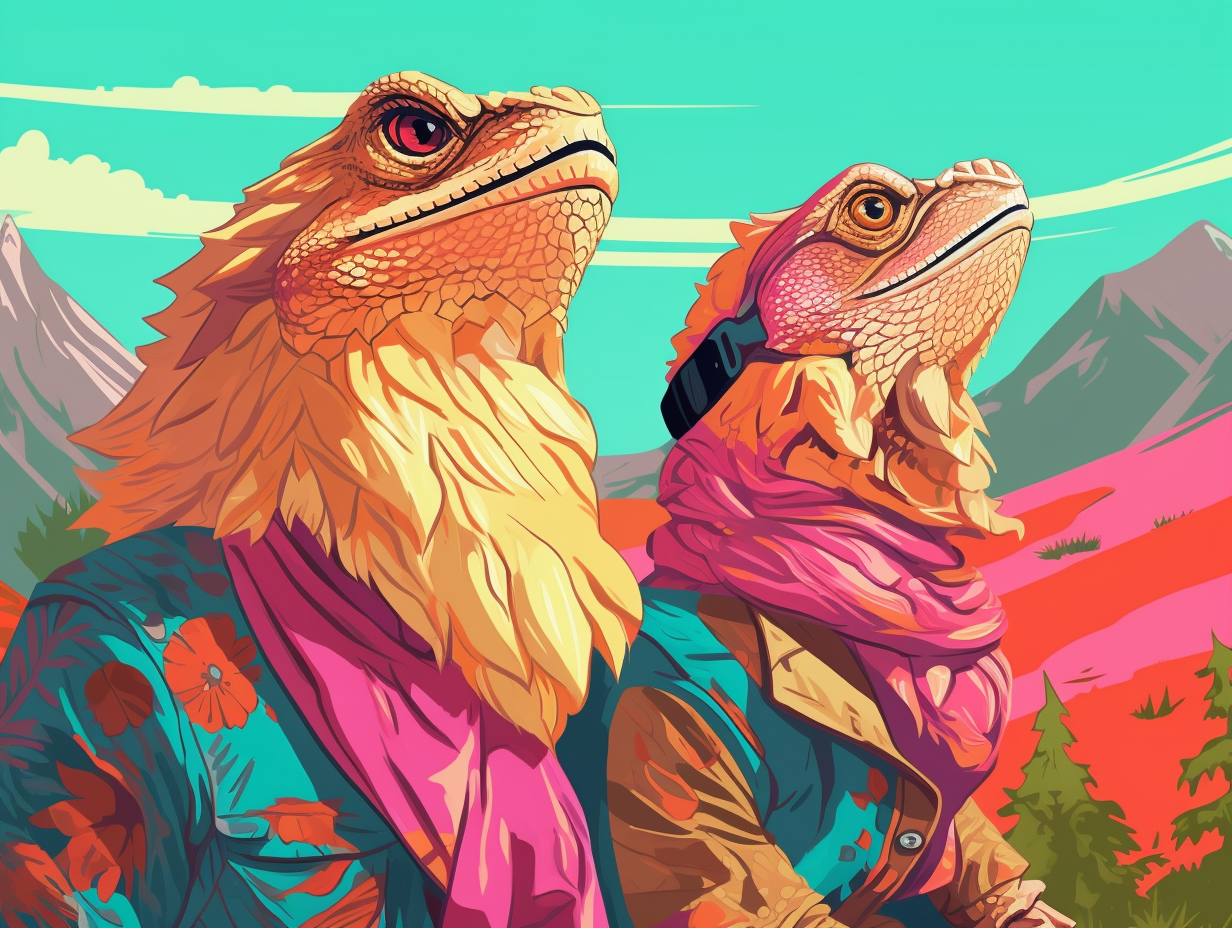
Did you know bearded dragons can change their colors for communication, camouflage, and even to express their emotions? Discover the fascinating reasons behind their hue-altering abilities!
=> Fun Facts about Bearded-Dragons
3. Baby Komodos Hide from Cannibal Relatives
Whoever said "size doesn't matter" clearly never met a baby Komodo dragon trying to avoid becoming a family meal: These tiny toddlers weigh just 3.5 ounces (100 grams) and are 16 inches (40 centimeters) long, spending their early years hiding out in trees where adult Komodo cannibals can't reach them.
Source => nationalzoo.si.edu
4. Sneaky, Not Speedy Hunters
Who says size and speed have to go hand in hand? Komodo dragons, the colossal lizards who never signed up for a marathon, beg to differ: These reptilian titans prioritize hiding in the shadows and cooking up a surprise ambush, rather than sprinting after their meals, with top speeds reaching only 10 to 13 mph (16 to 20 kph) momentarily.
Source => nationalzoo.si.edu
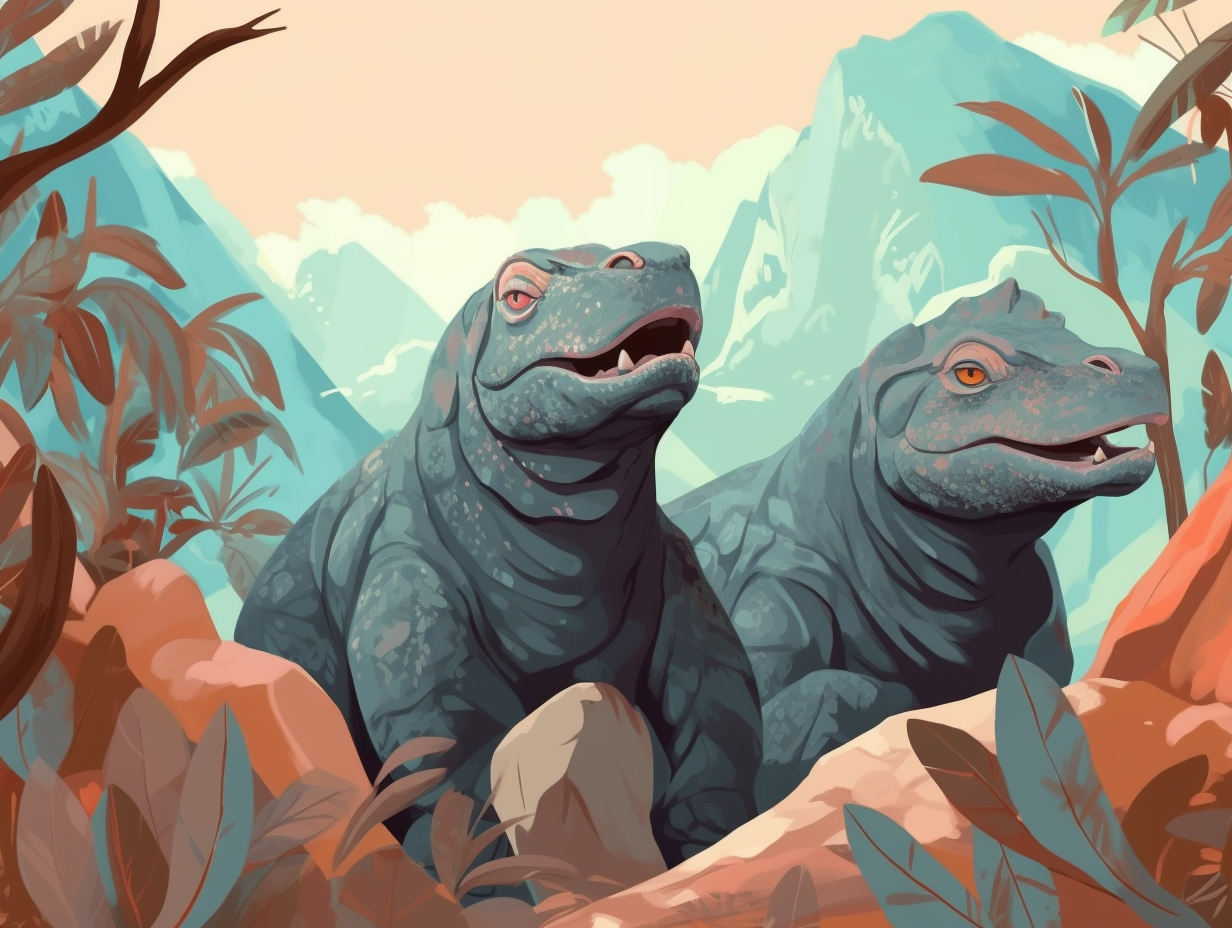
5. Killer Grin Subdues Prey
Who needs a water buffalo when you've got a killer grin? Komodo dragons do: Their venomous bite lets them snatch supper from the jaws of much larger creatures, including water buffaloes. Their bite works by increasing blood loss and causing excruciating pain, debilitating prey until it's time for the scaly comedians to deliver the punch line—the killing strike.
Source => a-z-animals.com
6. Toxic Tooth Fairy Saliva
Who needs a salad when you can have a "bacteria buffet"? Komodo dragons have mastered the art of the toxic tooth fairy: their saliva contains over 50 strains of deadly bacteria, making their bite one of the most dangerous in the animal kingdom.
Source => denverzoo.org
7. Power Couple Hierarchies
Don't confuse these giant lizards for the reptilian version of "The Bachelor" – they've got a different definition for the term "power couple": Komodo dragons establish dominance hierarchies based on factors like aggression and combat experience rather than just size.
Source => animaldiversity.org
8. Bloody Venomous Sneeze
If dragons were real estate agents, Komodo dragons would definitely make a killing with their unique selling point—a "smoke-free" abode, but with an extra touch of spicy venom aroma: These scaly beasts might not breathe fire like their mythical cousins, but they do possess the incredible ability to autohemorrhage, expelling blood from their nostrils when threatened or stressed. So, while they may not incinerate foes, they do confuse and deter predators with a venomous, bloody sneeze!
Source => nationalzoo.si.edu
9. Reptilian Fight Club Champions
When Komodo dragons aren't busy auditioning for roles as mythical creatures in your favorite fantasy novels, they're gearing up to dominate the reptilian fight club scene: These ferocious savannah-dwellers boast an impressive set of genes that supercharge their metabolism and energy during hunting and fighting escapades, while producing handy blood-clotting proteins to safeguard against other dragon frenemies. But beware, this top-of-the-food-chain lifestyle is in jeopardy, as poaching and human-driven habitat loss are causing these epic creatures to slip into the realm of endangered species.
Source => smithsonianmag.com
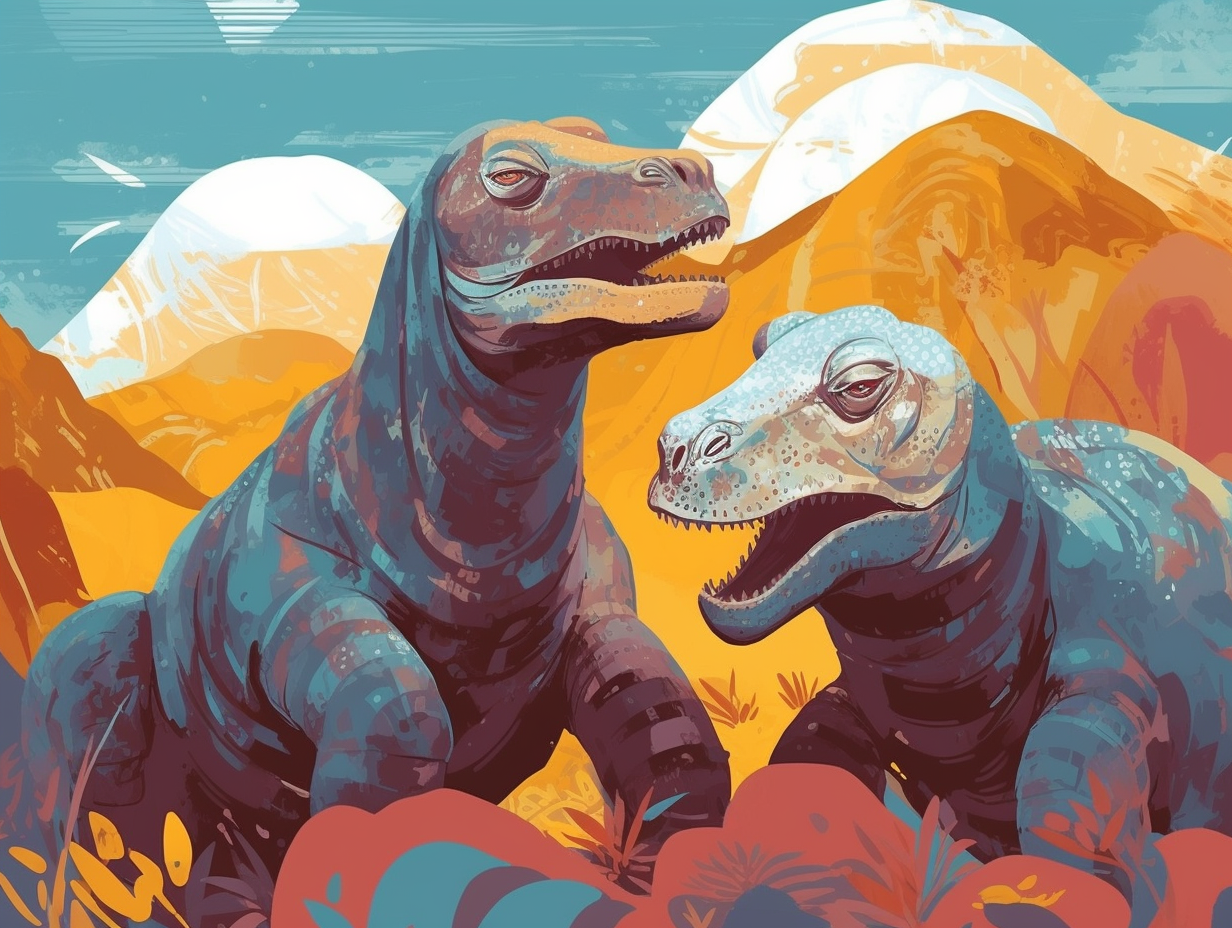
10. Teamwork Takedown of Large Prey
Forget about superhero teams; reptiles have their own stealthy avengers, and they're called Komodo dragons: Boasting keen senses and a knack for teamwork, these scaly vigilantes collaborate to bring down large prey like deer and water buffalo, with bigger dragons tackling the head and front legs while their smaller comrades swoop in for the hindquarters.
Source => en.wikipedia.org
11. Sunbathing Temperature Regulation
Komodo dragons must have taken sunbathing lessons from Goldilocks: finding that sweet spot between "too hot" and "just right" is crucial to their reptilian relaxation! But when things heat up, these scaly sun-worshippers know just how to chill out: by regulating their body temperature through basking in the sun or seeking shade, immersing their snout in water, or panting to cool themselves down and prevent hyperthermia, which shows off their impressive adaptability skills.
Source => temperature-control.fandom.com
12. Tree-Climber Turned Ground-Dweller
When young Komodo dragons hit the scales – sorry, the pop charts – with their debut single "Climbing Trees" – it topped the charts, but as the years went by, they just couldn't hold up to their own heavyweight success: Juvenile Komodo dragons possess sharp claws enabling them to skillfully climb trees and evade cannibalistic adult dragons; however, as they mature into gigantic lizards, their increasing mass restricts them to ground-dwelling and hunting prey.
Source => worldwildlife.org
13. Bacteria-Swapping Dinner Parties
Komodo dragons might not host the wildest dinner parties, but they're not shy about sharing a disgusting potluck either: these solitary lizards enjoy feasting on large prey like water buffalo or pigs, inadvertently swapping oral bacteria in the process through infected meals.
Source => ncbi.nlm.nih.gov
14. Solar-Powered Reptilian Rockstars
These sun-worshipping reptilian rockstars don't skip a beat when it comes to their early morning solar sessions: Komodo dragons religiously bask in the morning sunshine, retreating to the shade in the afternoon and cozy burrows at night to maintain their body temperature without extra fat storage, ensuring they're always ready to drop the next scaly chart-topper.
Source => mnzoo.org
Related Fun Facts




